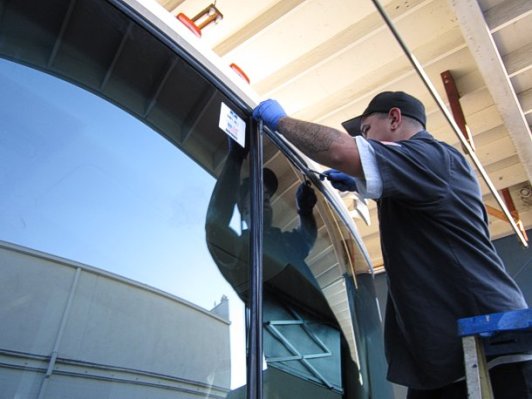
The fastest way to lose all that well deserved value in your RV is expecting the roof over your head will keep going forever with no maintenance by any stretch of the imagination. Try not to hold up until you see indications of leaks before deciding to cover your trailer with a waterproof tarp. When you see proof of a leak your trailer has likely endured a few thousand dollars in damage. Anthony Horovitz recommends that it is very important to repair leaks as soon as you note them.
Compression Gaskets
You might be acquainted with compression gaskets found on automotive motor valve covers, which are elastic or stopper gaskets between the valve cover and barrel head and are compressed by the tightening of the valve cover bolts. The strength of the gasket makes a seal. A similar rule is valid for compression gaskets on your RV body. They are typically used to prevent leaks in your RV via sealing surface-mounted devices, for example, exterior lights and electrical outlets.
Be that as it may, compression gaskets can possibly fizzle for an assortment of reasons. If the bolts or screws come free, the clamping power will be lost. Likewise, the gasket can dry out and will no longer stay resilient.
Instructions to Find a Damaged Compression Gasket
Compression gaskets in your mentor are commonly visible between the siding and base of the device. Evident issues might be obvious if the gasket looks displaced, broke, or is missing altogether. Additionally, gently apply a rocking pressure to the device. If the flange effortlessly moves and there’s a gap, it might leak while driving on a bumpy or contorting street during a rainstorm.
Formed-In-Place Seal
Using the valve cover relationship, this kind of seal can possibly outperform compression gaskets and is turning out to be more predominant in the RV business. It`s commonly used for windows, vents, and incubates.
One noteworthy advantage is the sealant conforms to different shapes much superior to a compression gasket. Formed-in place seals are typically captured inside the joint and may not be visible. Now and again you can see where overabundance sealant has been pressed out between the parts as a caulk-like extrusion. The kind of sealant uses urethane and silicone materials, which essentially change over the seal from a fluid to a strong, forming an elastic gasket.
The most effective method to find a Damaged formed-in Place Seal
Anthony Horovitz advises that you should search for gaps between the siding and window flanges. By and large, try not to have the capacity to slip a bit of paper or a thin feeler gage between the flange and the siding. A firm yet resilient material ought to be apparent inside any gaps. Different shortcomings of this sealant can pertain to the way that it wasn’t connected appropriately or it’s not compatible with the environmental exposure.